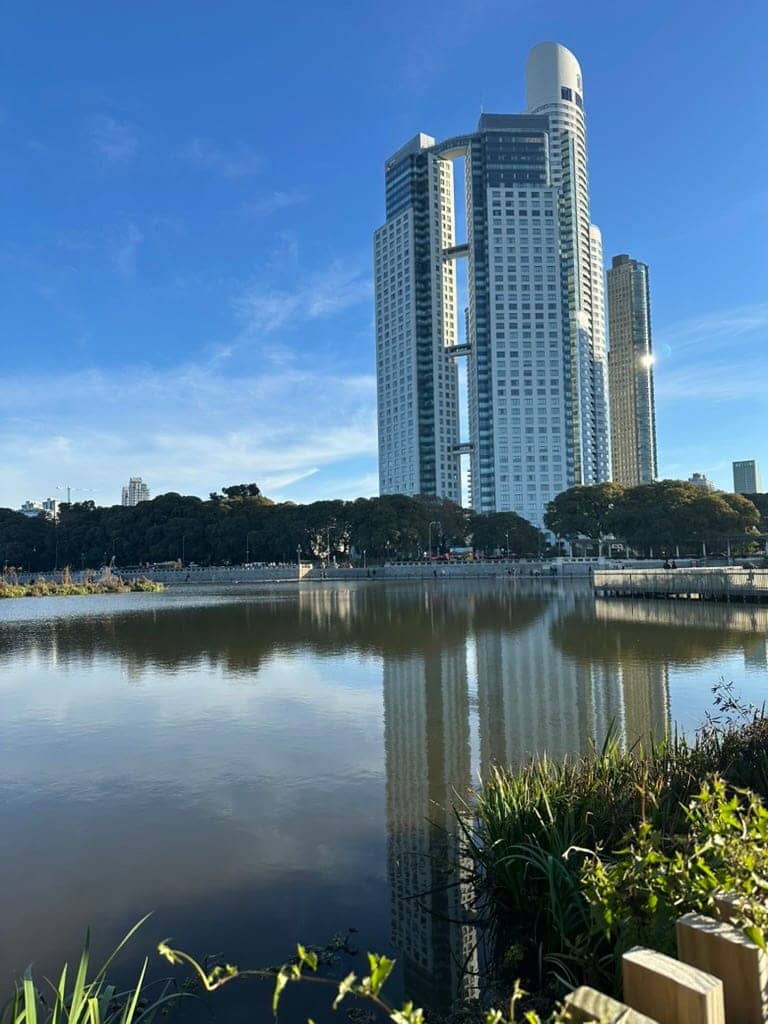
The Port That Was Born Old: When Buenos Aires Chose Prestige Over Function

A story of urban decisions, necessary failures, and the courage to reinvent
Did you know Buenos Aires chose to build a port that wouldn’t work just to look like Europe? This is the story of Puerto Madero: when prestige beat pragmatism… and how that “failure” became Latin America’s boldest urban transformation.
In 1882, two projects disputed not just the port of Buenos Aires, but the idea the city had of itself. Luis Huergo—engineer, pragmatic—proposed straight piers following the river’s geography: functional, economical, designed for a port-city growing from work. Eduardo Madero—nephew of Vice President Francisco Madero, well-connected—imagined closed docks Liverpool-style: symmetrical, ornamental, worthy of a capital that always looked to Europe before understanding itself.
The battle between creole pragmatism and imported prestige was won by Madero. Between 1887 and 1898, English architects John Hawkshaw and Harrington Hayter designed from London a port that Thomas Walker & Co. built with red brick docks that looked like industrial cathedrals transplanted from England. Armstrong Whitworth cranes presided over a beautiful but dysfunctional port: it was scenography before infrastructure.
By 1911 they were already building Puerto Nuevo following—irony of fate—Huergo’s ideas. In 1925, the last ships abandoned Madero’s docks. The port born to impress remained an urban relic: over 60 years of abandonment, with monumental warehouses taken over by entire colonies of rats, in the heart of a city that preferred not to look toward the river.
The Archaeology of Abandonment
My grandmother saw it from her ANMAT office: that landscape of abandonment Buenos Aires had naturalized. Brick warehouses bitten by humidity, metal structures rusting in the open, weeds growing between railway tracks. It was the exact reverse of the dreamed port: the place where the city stored its most visible failure.
For over half a century, Puerto Madero was the porteño urban unconscious. There lay the consequences of choosing appearance over function, prestige over pragmatism. The 1882 decision had become ruins, and the ruins had become normality.
But cities, like people, sometimes need to hit bottom to reinvent themselves.
The Laboratory of Reinvention
In 1991, when the Antiguo Puerto Madero Corporation—an unprecedented mixed management model in Argentina—decided it was time to transform that urban edge, it wasn’t just about recovering buildings. It was redefining what city we wanted to be. Again, geography as politics; urbanism as self-portrait.
My father moved near Puerto Madero in the late ‘90s, when cranes still drew the skyline and every walk was archaeology of the future. We went to watch the El Faro towers grow, to walk the Puente de la Mujer as if we were the first to step on it, to witness how the old Molinos silos became lofts with the Armstrong Whitworth cranes still present as silent witnesses of this place’s two eras: industrial and residential.

The parks with straight lines and millimetric grass were our laboratory of modernity: a Buenos Aires without broken sidewalks or improvised corners. But also something more: planned green spaces where there was only abandonment, pedestrian walks connecting the city with the river, cultural infrastructure democratizing access to contemporary art.
Because Puerto Madero isn’t just corporate towers and restaurants over the dock—though that’s the most sold postcard. It’s also the Fortabat Museum with first-class Argentine art, the Ecological Reserve that self-regenerated over rubble, the running paths where anyone can train for free, the Nereidas Fountain that migrated from Plaza de Mayo to find its definitive place facing the river, the historic frigate Sarmiento telling Argentine naval history.

Beyond the Tourist Postcard
Later I moved nearby and Puerto Madero became my morning running track, my green refuge in a city breathing concrete, my direct connection to the river without traffic light mediation. There I understood this neighborhood has multiple layers of use, not all visible in tourist guides.
At 7 AM, while waiters dressed as gauchos still sleep, Puerto Madero belongs to runners, dog walkers, retirees doing tai chi facing the river. At 8, it fills with office workers walking toward their mirrored corporate buildings. At 6 PM, it’s territory for families seeking free space for kids to ride bikes. On weekends, it transforms into a rest destination: picnics, bike rides, and mate.
Is it gentrification? Yes, also. But it’s more complex than that.
The Politics of Urban Transformation
Here’s the tension that defines Puerto Madero and, really, defines every successful urban transformation: can a space be simultaneously exclusive and inclusive? Can state planning coexist with private investment without one canceling the other?
For many porteños, Puerto Madero remains empty ostentation, a non-place that doesn’t belong to them, a real estate experiment disguised as a neighborhood. And they’re partially right: it’s expensive to live there, many restaurants target tourism, the aesthetics sometimes seem forced.
But it’s also true that where there was wasteland now there are 28 hectares of public green spaces within the Puerto Madero project. That Costanera Sur, which went from elegant beach resort in the ’20s to marginalized zone in the ‘70s, today is part of the largest green space complex in downtown Buenos Aires along with the 350-hectare Ecological Reserve. That Argentine art has an exhibition space (the Fortabat Museum) that didn’t exist before. That thousands of people can access the river in a city that historically turned its back on water.

One of the new walkways in the Ecological Reserve.
Puerto Madero’s true lesson isn’t that urban transformation is good or bad per se. It’s that cities, like living organisms, need to evolve or die. And that sometimes, paradoxically, the most resounding failure can become the most valuable opportunity.
Buenos Aires chose wrong in 1882. It built an English port on River Plate geography, prioritized image over function, bet on imported prestige over local innovation. The result was predictable: a port that didn’t work, obsolete before turning 40.
But that error became, a century later, the raw material for one of Latin America’s boldest urban transformations. Abandoned Victorian warehouses became lofts and cultural centers. Dysfunctional docks transformed into water mirrors multiplying the sky. Rusty rails became green paths.
The Geography of the Present
I insist Puerto Madero is to be lived: to breathe air coming from water, to see art between historic docks, to understand that sometimes a city needs to invent spaces where none existed. It’s not nostalgia or pure speculation: it’s geography of the present, a piece of Buenos Aires that dared not resemble any other.
Is it perfect? No. Is it inclusive? Not completely. Did it solve all Buenos Aires’ urban problems? Of course not.
But it did achieve something that seemed impossible: returning the river to a city that had forgotten it was a port. And that, in a metropolis of 15 million inhabitants, is no small thing.
Next time you walk through Puerto Madero—whether to run, see an exhibition, or yes, even eat at one of those restaurants overlooking the dock—remember you’re stepping on the materialization of a question all cities ask themselves: who are we and who do we want to be?
Buenos Aires took 109 years to answer it. But when it did, it built not just a new neighborhood, but a new way of thinking about itself.

And tell me: Do you have your own Puerto Madero experience? Or some place in your city that completely changed and generates mixed feelings? I love reading these stories in the comments.
If this story resonated with you, share it. You surely know someone who needs to rediscover their own city with different eyes.

Want to receive my newsletter? Subscribe to "El Baùl Cultural" on my Substack!
A weekly space for reflection where I share my experiences, expressed through my passions: reading, travel, film, art, politics, and technology.










